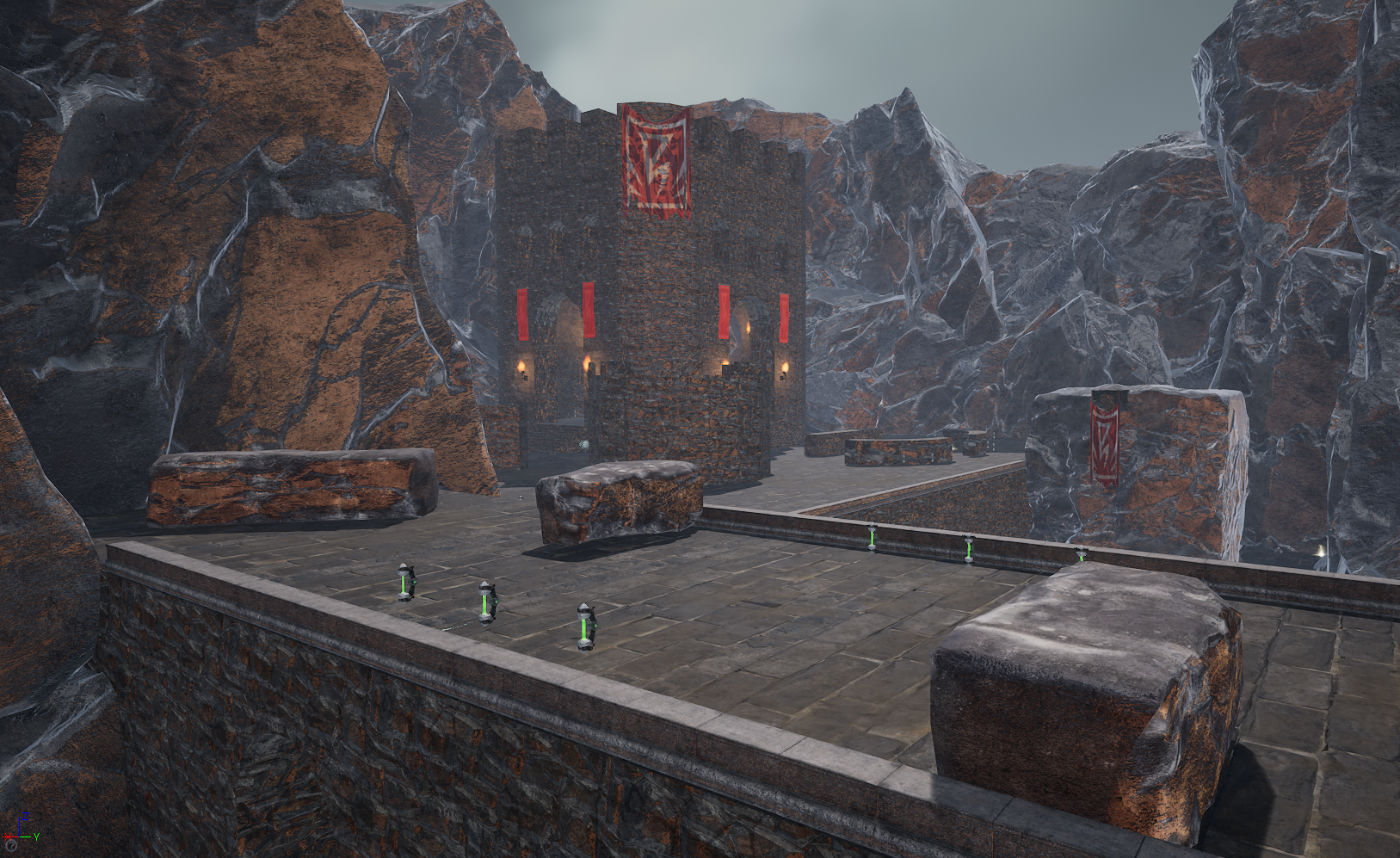Two Towers
A Capture the Flag Level for Unreal Tournament (2014)





Development Information
- Team size: Solo Project
- Production Duration: Three weeks
- Work Hours: Roughly 15 hours per week
- Engine: Unreal Tournament (Unreal Engine 4)
- Platform: PC
Summary
“Two Towers” is a 4 versus 4 Capture the Flag map where each team inhabits a small fort on either side of a canyon in the mountains. Players cross into the enemy base either by using a large bridge running between the two sides, or by crossing down into the dry riverbed in the valley below. The division of attack routes allows for multiple player choices in attack patterns, and multiple angles for defenders to control.
Players have access to six different weapons. Each base contains the Link Gun, Sniper Rifle, and Flak cannon; each side of the canyon contains a Shock Rifle and a Minigun; and the center of the bridge contains a single Rocket Launcher. Each base contains head armor and leg armor, and either side of the canyon contains the chest armor. The U-Damage is the only powerup, and it lies beneath the center of the bridge.
Level Design Document: This Level Design Document contains all of my original sketches and thoughts before I opened up the editor and began constructing the level.
Project Download: The final product of the project is available for you to download and play with Unreal Tournament. Visit this link for help installing mods to Unreal Tournament.
My Responsibilities (Level Designer)
- Create and maintain Level Design documentation.
- Create level layouts; place items, lighting, and clutter.
- Create meshes for special purposes that don't already exist in Unreal Tournament.
- Balance gameplay for various team sizes.
- Independently schedule playtesting and respond to feedback.
- Served as a leader in playtesting, and helped to coordinate the distribution of maps between designers.
- Maintain lines of communication with faculty regarding progress and blockers throughout development.
Mini-Postmortem
What Went Right
- I successfully iterated on the basic concept multiple times, each time improving gameplay.
- I successfully converted the entire map into static mesh from BSP, and appropriately unwrapped those meshes so that I could texture them correctly.
- I solved technical challenges that prevented my cohort from playtesting late in the project by setting up a custom server to host our content.
What Went Wrong
- Much of my playtesting was limited to fellow designers working on their own Unreal Tournament projects, so I did not get very diverse feedback.
- The process for creating meshes using 3DS Max for the level was much more time consuming than I originally believed.
- Because of this time management challenge, I had less time to clutter and polish the level.
What I Learned
- Proper playtesting requires all kinds of testers-- not just those who are already familiar with the game. This is espcially true at later stages in the design process.
- When seeking to work with 3D modeling, I need to budget extra time into my estimates so that I can accurately scope myself.



